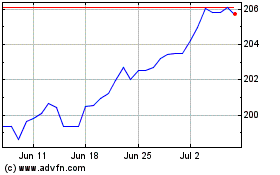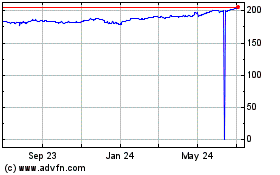RBA Leaves Interest Rate Unchanged At Historic Low
March 04 2019 - 7:44PM
RTTF2
The Reserve Bank of Australia on Tuesday decided to keep its
benchmark interest rate unchanged, but cited that global trade
tensions and household indebtedness posed risks to the growth
outlook.
The board of the Reserve Bank of Australia, governed by Philip
Lowe, voted to maintain the cash rate at 1.50 percent. The interest
rate has remained at the current level since August 2016.
"Taking account of the available information, the Board judged
that holding the stance of monetary policy unchanged at this
meeting would be consistent with sustainable growth in the economy
and achieving the inflation target over time," the bank said in a
statement.
The RBA noted that the low level of interest rates is continuing
to support the Australian economy.
Policymakers expect further progress in the reduction of
unemployment and inflation returning to target, although this
progress is likely to be gradual.
The central bank said it still expects the Australian economy to
grow by around 3 percent this year, reflected by rising business
investment, higher levels of spending on public infrastructure and
increased employment.
Underlying inflation is forecast to pick up over the next couple
of years, although the acceleration is likely to be gradual and
could take a little longer than earlier expected. The central bank
retained its forecast for underlying inflation at 2 percent for
this year and 2.25 percent for 2020.
The RBA said that the housing markets in Sydney and Melbourne
are experiencing a period of adjustment, after an earlier large
run-up in prices. Housing conditions remained soft in both markets
and rent inflation continued to be low.
Growth in credit extended to owner-occupiers has eased and the
demand by investors has slowed noticeably due to changing dynamics
of the housing market, it added.
The RBA statement sounded more optimistic on the outlook for the
Australian economy, Ben Udy, an economist at Capital Economics,
said.
Udy suggested that the housing downturn, a tightening in credit
conditions and a softening global outlook could weigh on the
Australian economy in 2019, triggering a slowdown in GDP growth to
2.0 percent this year and prevent underlying inflation from gaining
much momentum.
The economist expects the RBA to rethink its optimistic outlook
and cut rates before the end of the year when the outlook
softens.
Sterling vs Yen (FX:GBPJPY)
Forex Chart
From Mar 2024 to Apr 2024

Sterling vs Yen (FX:GBPJPY)
Forex Chart
From Apr 2023 to Apr 2024
